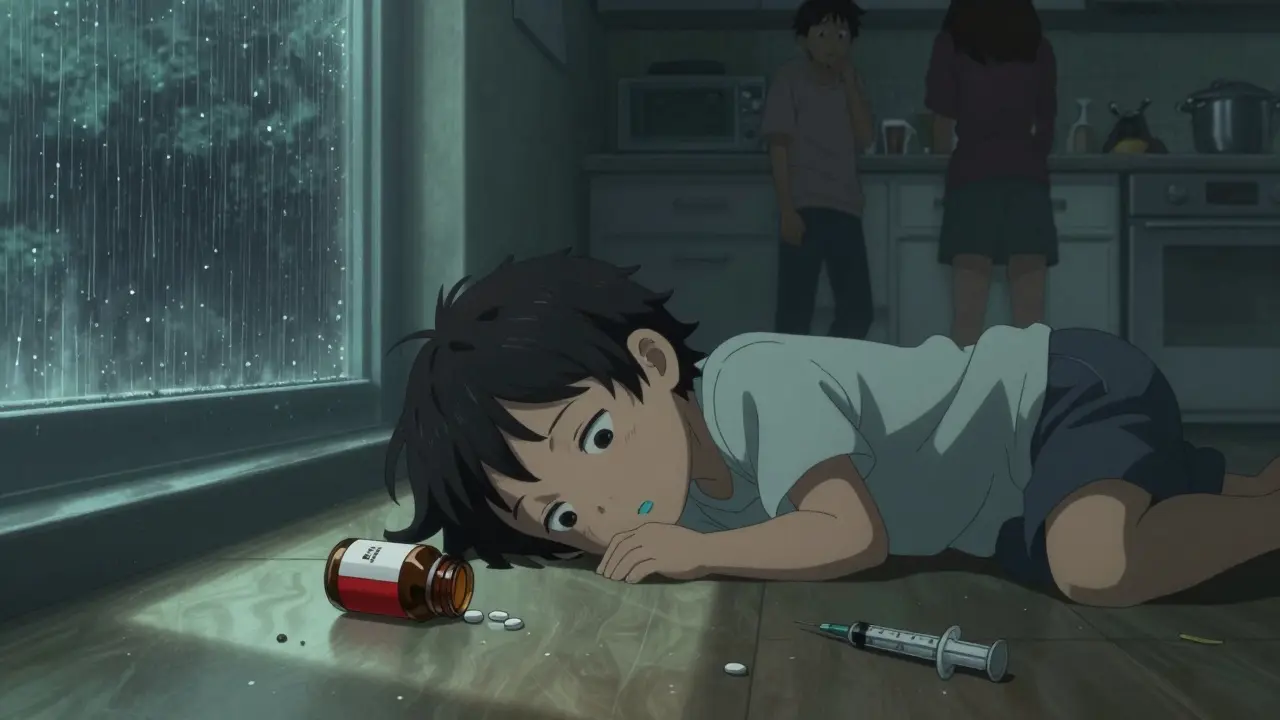It sounds almost like a fairy tale: a beautiful autumn flower hiding the secrets of a potent supplement, quietly growing in gardens while scientists hustle in labs, uncovering its medicinal magic. The autumn crocus has long been admired for its vibrant purple blooms that pop up just when summer says goodbye. But behind its delicate look lies a powerhouse compound—colchicine—that’s hijacked more than a few headlines. Most people wouldn’t guess that a flower with “crocus” in its name could have any connection with cutting-edge dietary, medical, or wellness trends. But this little plant isn’t just another pretty face in the world of health supplements.
The Fascinating Chemistry and History of Autumn Crocus
The scientific name for autumn crocus is Colchicum autumnale. Don’t get it confused with your typical spring-blooming crocus—these two come from totally different plant families. The history of autumn crocus as a healing tonic goes back nearly 2,000 years. Ancient Greeks, especially in regions that now fall inside modern Turkey, recognized its intense properties, using it in treating everything from swelling to gout. Fast forward to the 21st century, and colchicine—the active alkaloid isolated from autumn crocus bulbs and seeds—is FDA-approved for certain conditions, sparking renewed curiosity about its broader dietary benefits.
You might be surprised to know that colchicine was once described by Hippocrates himself in 400 BC as a remedy for pain and inflammation. Stories abound of Roman gladiators receiving salves made from crocus to help heal bruises after battle. Later, European royalty used concoctions derived from Colchicum for what they called “the disease of kings”—gout, which was rampant in those with rich diets. But it’s not just about history. Modern research, including a major review in the journal Frontiers in Pharmacology in 2023, has mapped out the molecular mechanics of colchicine, demonstrating its effectiveness in controlling uric acid buildup—a huge factor in chronic inflammatory diseases.
Being so potent isn’t without risks. The difference between a therapeutic dose and a toxic one is quite narrow, which is why autumn crocus extracts are never something to DIY at home. Always seek out products that are controlled, regulated, and clearly labeled—no picking flowers in your backyard to make your own tincture. The right dosage, purity, and delivery method can make or break the safety and results. Medical-grade colchicine is measured down to the microgram for a reason.
People sometimes ask, “Is this the same as saffron crocus?” Not at all. While saffron crocus is prized for culinary uses and contains no colchicine, autumn crocus is almost exclusively a medicinal plant. In fact, all parts of the autumn crocus are considered toxic if ingested improperly, so never confuse the two at the spice market or in your garden!
Here’s a quick reference guide to help untangle the confusion between these famous ‘crocuses’:
| Feature | Autumn Crocus (Colchicum autumnale) | Saffron Crocus (Crocus sativus) |
|---|---|---|
| Bloom Season | Autumn (Sep-Nov) | Fall (Oct-Nov) |
| Main Chemical | Colchicine (alkaloid) | Crocin (colorant) |
| Edible? | No (toxic) | Yes (culinary, spice) |
| Uses | Medicine/supplement | Spice/tincture |
With all that history and chemistry packed into one flower, it’s no wonder scientists are still hooked on autumn crocus as a source for supplement innovation. But what does that hint of magic really mean for anyone considering adding it to a wellness routine? Let’s take a look at what modern research and health professionals are finding.

How Autumn Crocus Supplements Support Health: Science-Backed Benefits
You probably haven’t seen autumn crocus supplements stacked next to your Vitamin C on the pharmacy shelf, but they’re popping up more and more, often hiding inside joint health or anti-inflammatory blends. The main ingredient—colchicine—packs a punch, but what does the science say about its real-world effects?
First up: anti-inflammatory power. Colchicine works by interfering with microtubule formation in cells, which basically means it blocks the inflammatory signals that kick off when your body is under stress. That makes it hugely valuable for fighting painful flare-ups. The American College of Rheumatology recommends colchicine as a frontline treatment for acute gout attacks, helping reduce joint pain and swelling within just 24 hours in most cases.
But that’s not all. Studies published as recently as 2024 have found colchicine may help with other hard-to-treat inflammatory disorders like pericarditis (inflammation around the heart). In clinical guides, it’s noted to lower the chance of complications after heart surgery, and even reduce hospitalizations caused by certain cardiovascular events. If you have anyone in your family with gout, you’ve probably heard their doctor rave about how a microdose of colchicine keeps joints flexible and pain at bay.
Another neat discovery: thanks to its ability to slow down white blood cell movement, colchicine can help manage auto-inflammatory diseases like Behçet's disease or familial Mediterranean fever. For people with rare genetic conditions that don’t respond well to other meds, this is not just helpful—it’s life-changing!
But remember, like any high-power compound, there are drawbacks. Common side effects include stomach upset, diarrhea, and nausea, especially if the dose is even a little too high. That’s why professional supervision is a must. Pharmacists and doctors keep dosage calculated to the milligram—going rogue can cause far more harm than good.
Now, what about supplement form? Most autumn crocus products marketed to consumers are highly refined and micro-dosed to prevent overeating or unintentional poisoning. You’ll see tiny capsule doses or blended formulations combined with other inflammation fighters. Companies that take safety seriously provide certificates of analysis and sourcing data right on their labels. This helps trace quality all the way from farm to bottle. That’s what drew me and Jasper to try a joint blend containing colchicine (with clinical supervision, of course!) when he was dealing with a stubborn bout of gout from way too much ice cream cake. The relief he felt within days was the proof we needed—nature’s powerhouse.
Unexpected bonus? A subset of studies in 2023 and 2024 flagged possible antiviral benefits linked to colchicine. In lab settings, it slowed down replication of several viruses, although human testing is still at early stages. So don’t expect autumn crocus to pop up as the next flu treatment just yet, but the future looks interesting.
Feeling curious about what else the autumn crocus might help with? Here’s a snapshot of well-documented, science-backed uses and effects:
- Rapid relief during acute gout attacks
- Lower risk of recurrent pericarditis (heart inflammation)
- Possible support for some auto-inflammatory disorders
- Potential companion therapy for certain cardiovascular disease strategies
- Hello, new research! Early signs of antiviral activity
It’s not a miracle cure—it’s a specialist tool. Think of autumn crocus as a scalpel, not a supplement multivitamin. Anyone with kidney or liver problems, or those on other prescription meds, should definitely get medical advice before trying it. It’s powerful, no doubt. But in skilled hands and with the right safety checks, it’s changing lives.

Safe Supplementing: Tips and Considerations for Autumn Crocus Use
By now, you might be picturing yourself sprinkling autumn crocus extract into smoothies and hoping for transformed joints or a turbo-charged immune system. Not so fast—using this supplement safely is the make-or-break detail. Even though I’m a big fan of plant-based wellness, I won’t even let Jasper keep autumn crocus supplements outside the medicine cabinet. Safety first, always.
If you’re interested in exploring autumn crocus’s benefits, start with a talk to your healthcare provider. Don’t trust brands that don’t list colchicine content per serving, and skip any supplement not transparently sourced. The FDA classifies oral colchicine as a prescription medication for good reason—the risk of accidental overdose isn’t a joke, and signs of toxicity can creep up fast. Symptoms like abdominal pain, vomiting, and muscle weakness mean you need medical attention, stat. So stick to regulated products and never exceed the package dose.
For people with allergies to similar plants (lilies, tulips), autumn crocus is probably a no-go. And for those pregnant or breastfeeding, give it a wide berth. Animal studies found colchicine can cross the placenta, and experts say it’s not worth the risk. Kids? No way. The low therapeutic index means there’s no safe margin for young bodies.
If you are prescribed colchicine, or using a microdosed autumn crocus supplement under guidance, take it with food to minimize stomach irritation. Stay hydrated: colchicine can stress the kidneys if you aren’t drinking enough water. Store your supplement in a cool, dry place—heat and light can destroy active compounds.
Curious what’s in your supplement? Reputable manufacturers will share third-party lab results confirming colchicine levels, purity, and screening for contaminants. Demand transparency and clarity. If the label simply says “colchicum extract” with no dosage info, that’s a red flag. As a rule of thumb, never combine autumn crocus supplements with grapefruit or statin medications unless cleared by a doctor—potential interactions can magnify the side effects or reduce medication effectiveness.
Here are some handy, practical tips for consumers thinking about adding autumn crocus-based products to their routines:
- Always consult your healthcare provider—especially if you’re on other medications
- Choose supplements with pharmacy-grade certification or a doctor’s prescription
- Stick to microdosed, capsule-based products with clearly listed ingredients
- Never exceed recommended daily amount, no matter the temptation
- Watch for any allergic reactions—stop immediately if you feel unwell
- Monitor your hydration levels and kidney health regularly
With all the buzz around “natural” wellness, it’s easy to blur the lines between harmless culinary herbs and powerful plants like autumn crocus. But the right awareness makes all the difference—armed with real science, you can make choices that support your health instead of leaving it to chance. The journey from flowerbed to pharmacy shelf is a fascinating one, and autumn crocus is living proof that some of the most ancient remedies still have a place in the fast-paced world of modern wellness.


Evelyn Shaller-Auslander
July 23, 2025 AT 14:20Gus Fosarolli
July 24, 2025 AT 21:48Jerrod Davis
July 25, 2025 AT 18:40Dominic Fuchs
July 26, 2025 AT 16:29Jasper Arboladura
July 27, 2025 AT 23:52Joanne Beriña
July 29, 2025 AT 18:46Emily Rose
July 31, 2025 AT 16:51Ron Prince
August 1, 2025 AT 13:18Sarah McCabe
August 2, 2025 AT 20:01King Splinter
August 3, 2025 AT 09:32Kristy Sanchez
August 4, 2025 AT 00:45Michael Friend
August 5, 2025 AT 02:02Asbury (Ash) Taylor
August 6, 2025 AT 20:59